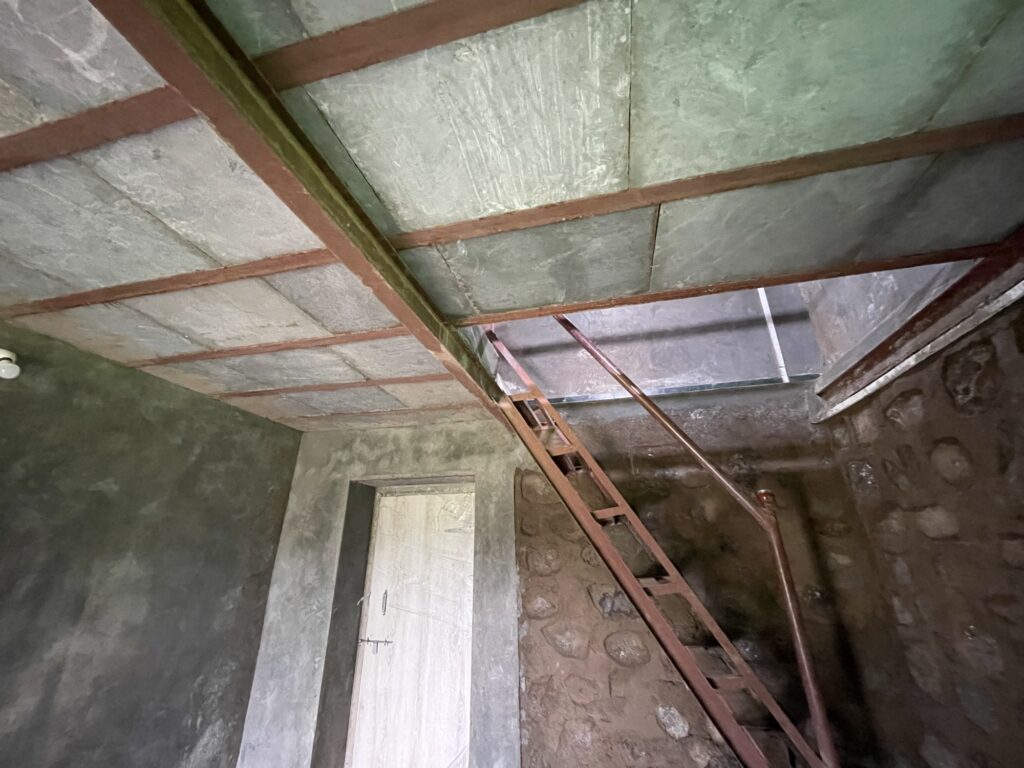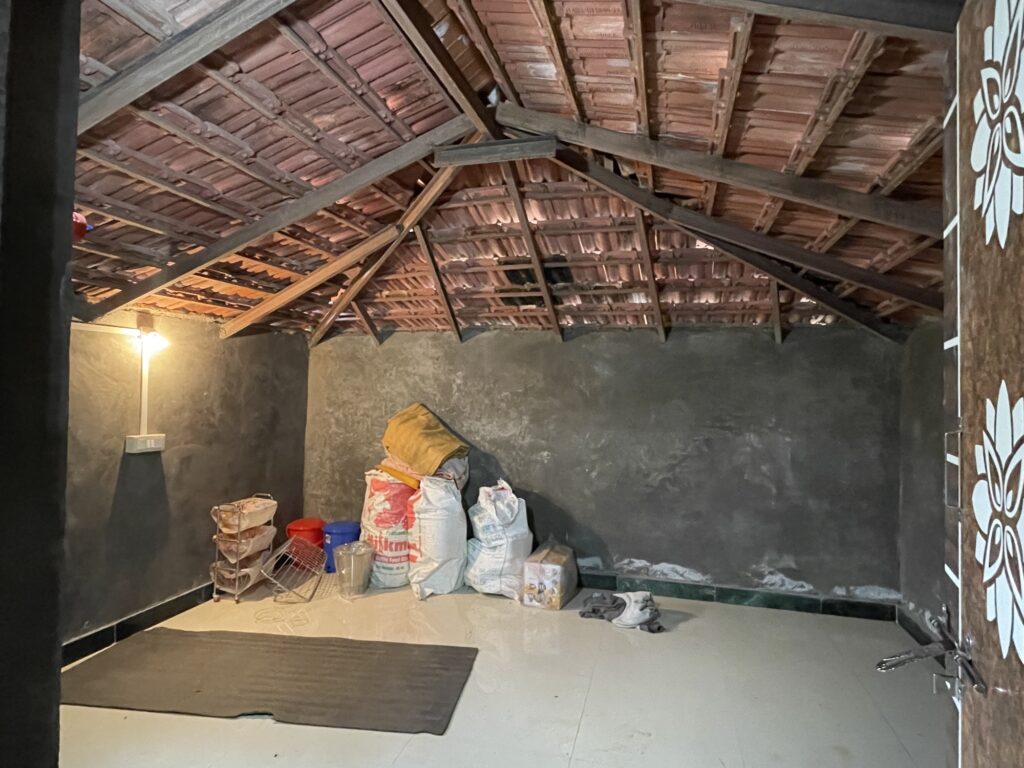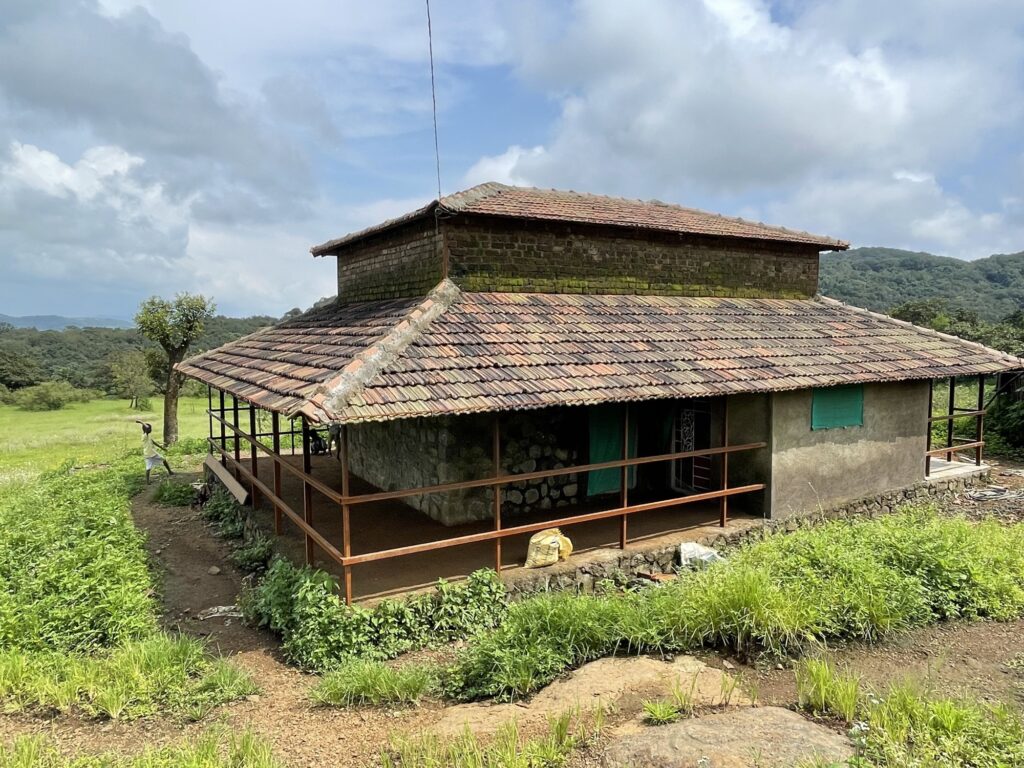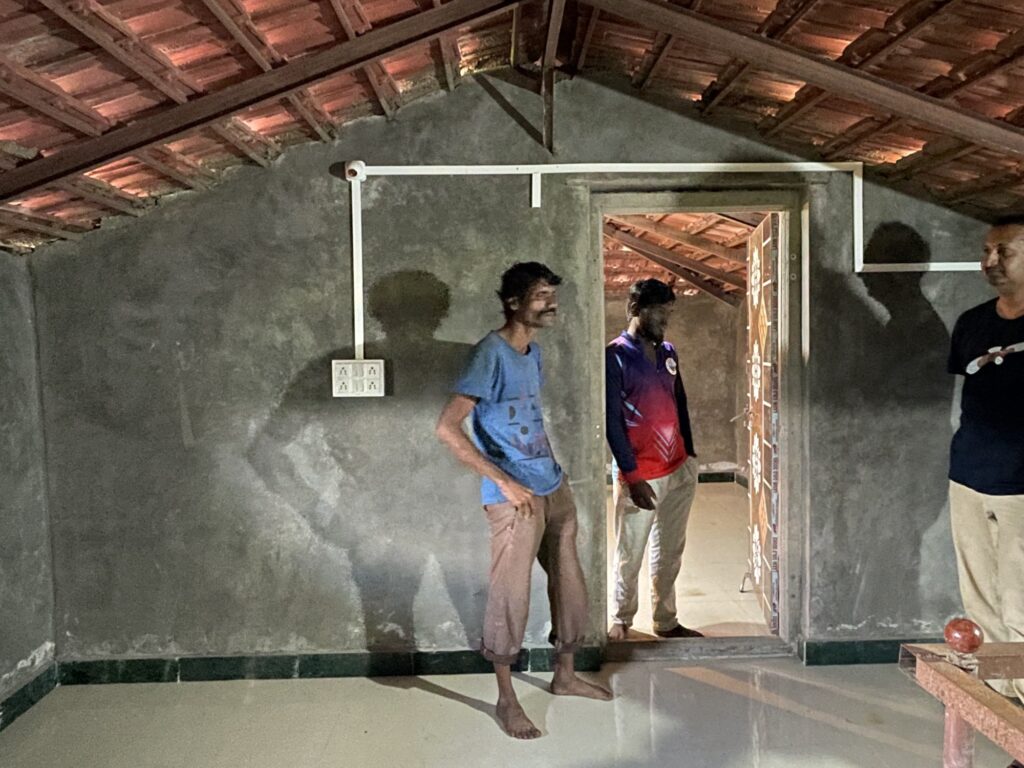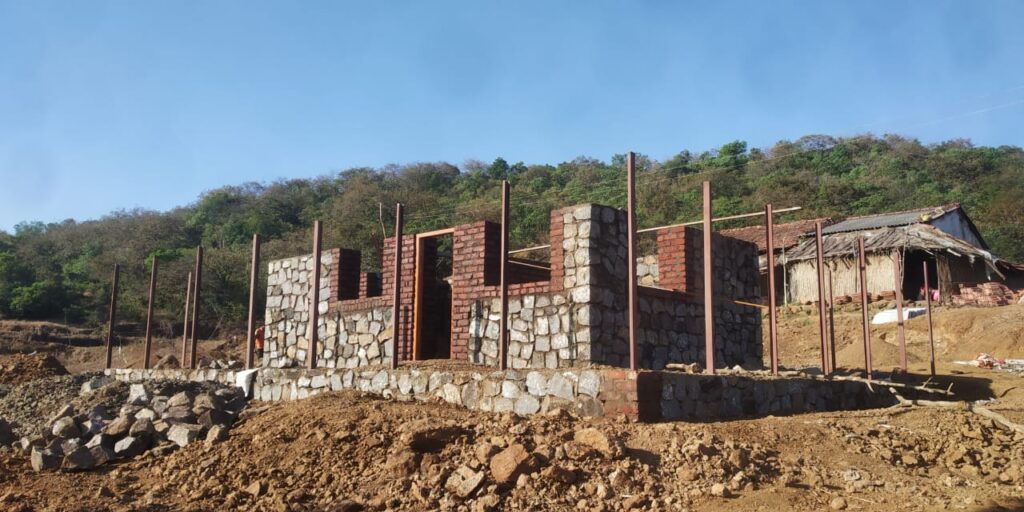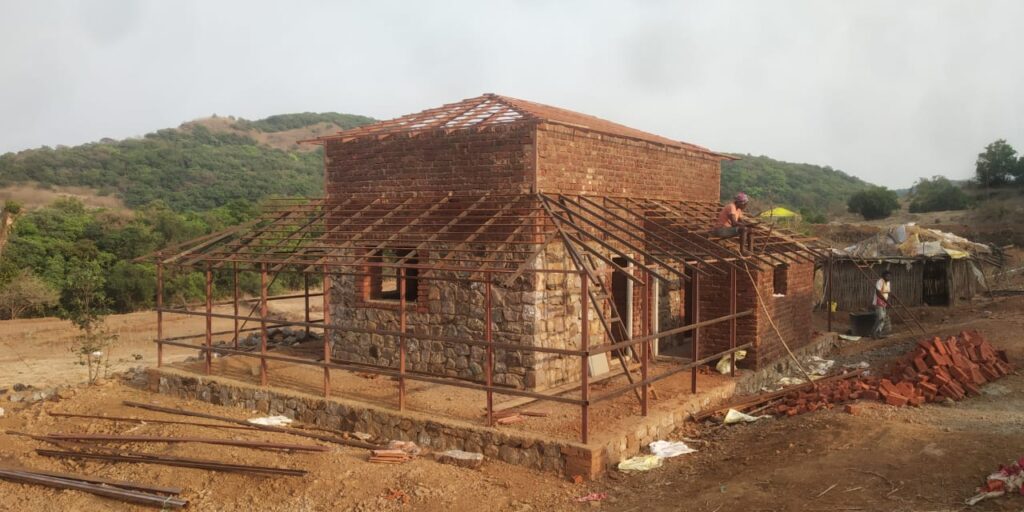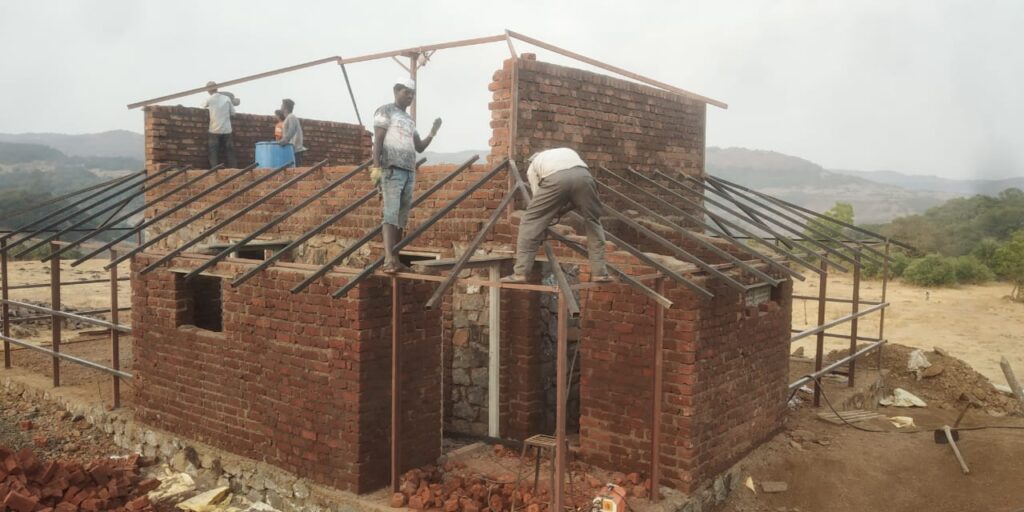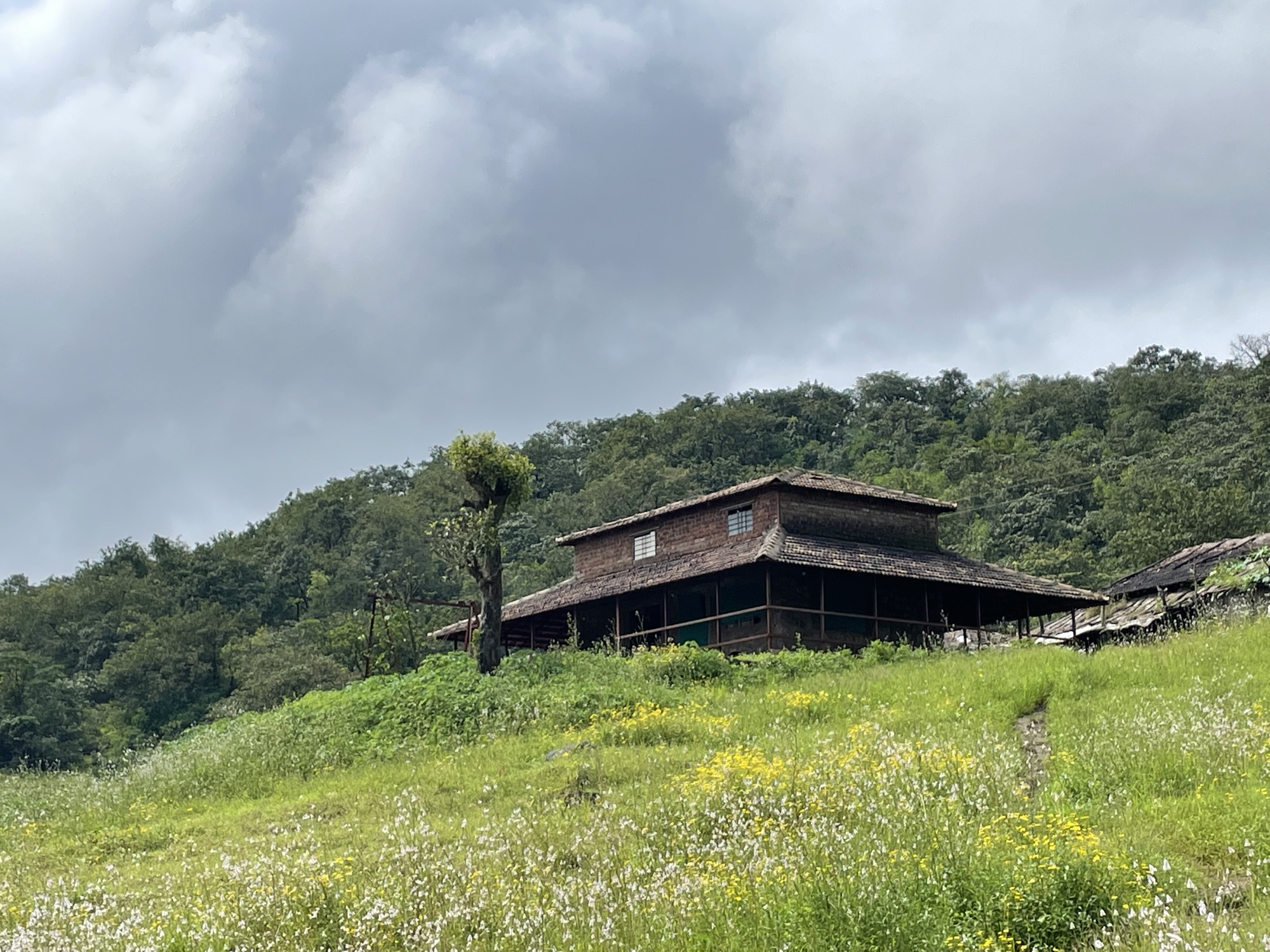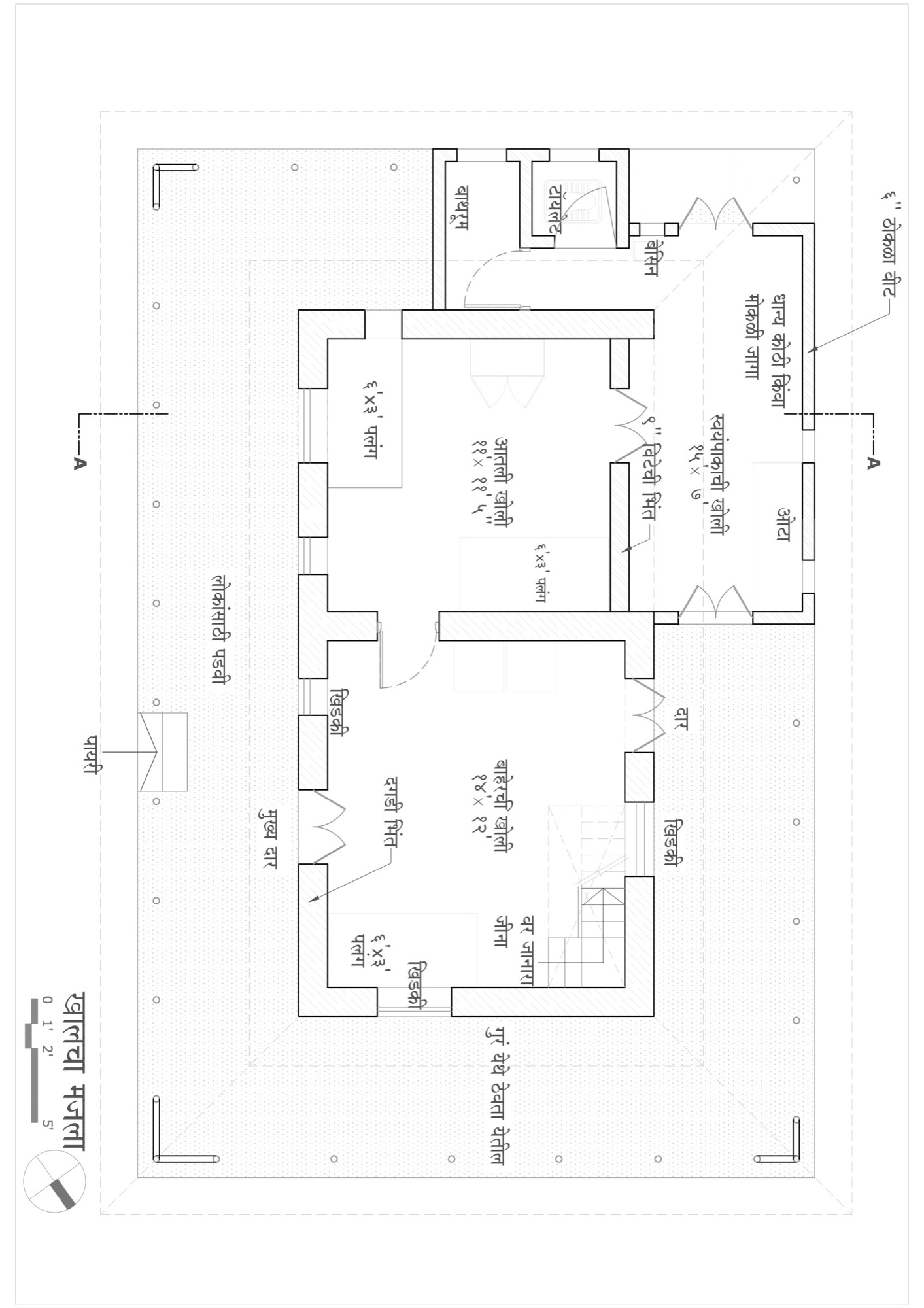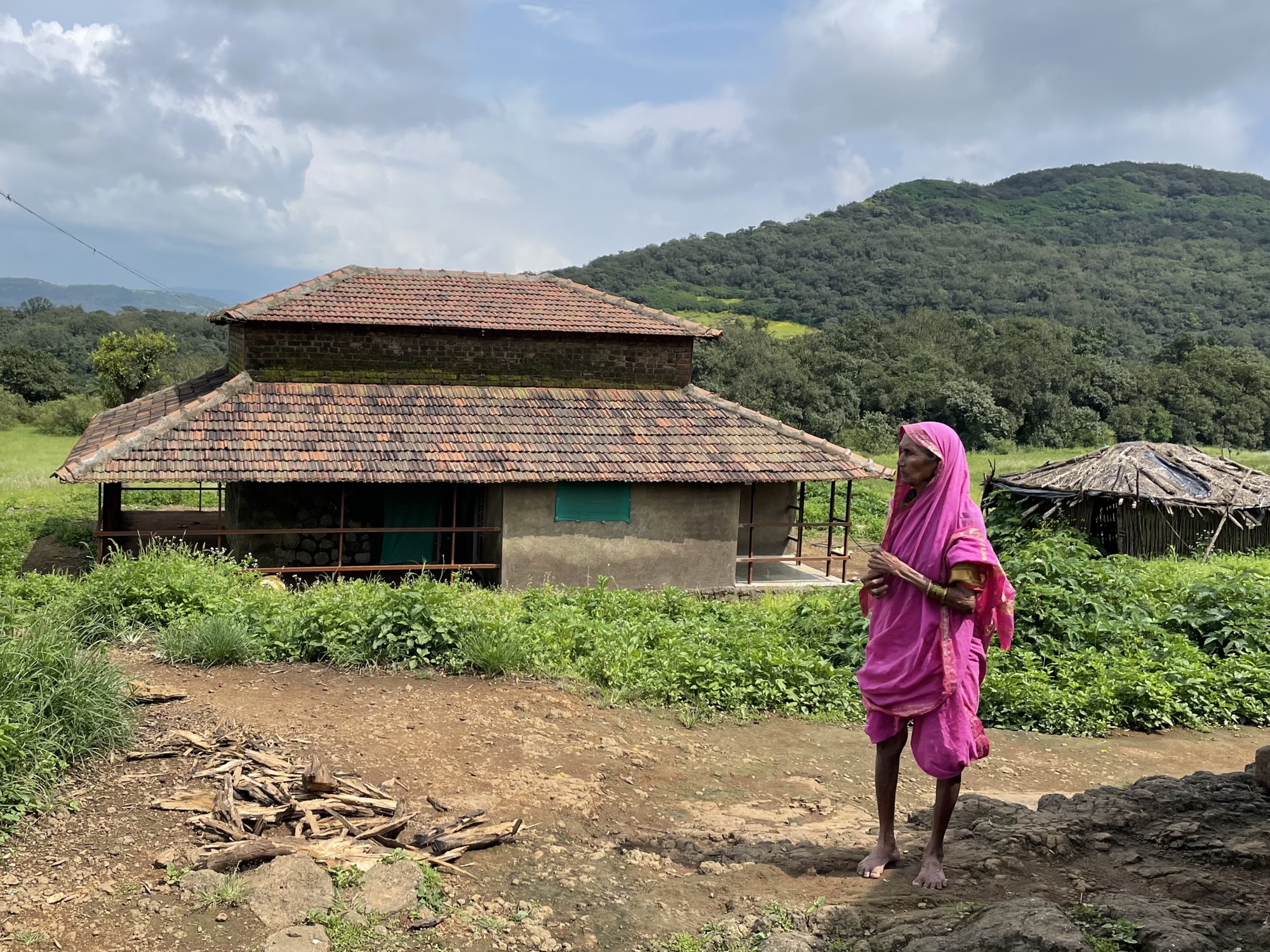
मराठी भाषांतरण साठी येथे क्लिक करा
How does one build a house in a tribal village accessible only on foot? It’s a community effort for the people of the small hamlet called Yelavali located on a plateau in the Bhimashankar wildlife sanctuary. Subhash, who belongs to this village, wanted to build a house for himself, his parents and his future family here.
One would think that transporting lightweight materials up to the village would be the way to go, but structures here must withstand the heavy rains and winds of the monsoon and the scorching summer heat of the plateaus of the Western Ghats. The challenge for us was to design an efficient structure for the climate, with materials the locals are comfortable building with. The footprint couldn’t be too big while giving them flexible and additional spaces a joint family requires. Traditionally all the activities like cooking, cleaning, drying, socialising and housing cattle happens in the add on temporary structures by the sides of the main house in these villages. Here, we integrated these spaces within deep set verandahs providing relief to the structure from heat. The volume of the central space was used to carve out two rooms above the living and bedroom below. This keeps the lower space cool.
The construction was taken up by entirely by Subhash, his family and friends. We simple gave them our inputs as required. The main structure is made in local basalt stone and brick. The roof and attic floors were made in MS fabrication and cement boarding where the material and fabricators were brought from the nearby villages. They have used easily available glazed ceramic tiles for the internal floors which are easy to install and are easy to maintain.
House Under Construction
This structure survived cyclone Taukte because of simple measures like anchoring the roof fabrication to the walls and plinth and securing the first row of clay tiles down with a simple MS bar running across fixed to the rafters. The house cost ₹9,00,000/- to build which includes a 25% hike in material cost attributed to carrying it up to the village on foot.
We visited Yelavali and the nearby villages recently and got a chance to interact with the locals about this house. We got good feedback from them and more people expressed their wish to build similar houses in this region!
Drawings
सुभाष चे घर.
आदिवासी गावात, जेथे फक्त पायी जाणेच शक्य आहे अश्या ठिकाणी घर बांधता येऊ शकते का? भीमाशंकर वन्यजीव अभयारण्यातील एका पठारावर स्थित येळवली नावाच्या छोट्या गावातील लोकांसाठी हा एक सामुदायिक प्रयत्न आहे. या गावातील रहिवासी सुभाषला त्याच्या भावी कुटुंबासाठी येथे घर बांधायचे होते.
एखाद्याला वाटेल की हलक्या वजनाचे बांधकाम साहित्य गावापर्यंत घेऊन जाणे हाच एक उपाय यावर असेल, परंतु येथील घरांना मुसळधार पाऊस आणि वारा तसेच पश्चिम घाटातील पठारावर असल्याने उन्हाळ्यातील उष्णतेचा सामना करावा लागतो. त्यामुळे हलक्या वजनाचे बांधकाम साहित्य व पारंपरिक पद्धतीचे बांधकाम साहित्य यातील मध्य साधणे गरजेचे होते. येथील वातावरणासाठी कार्यक्षम असणारी तसेच येथील लोकांना पटेल असे साहित्य वापरून बांधकाम करणे हे आमच्या साठी आव्हान होते. एकत्र कुटंबपद्धती साठी आवश्यक आणि काळाप्रमाणे लागणारी अतिरिक्त जागा देताना इमारतीचा ठसा फार मोठा असू शकत नव्हता. पारंपरिकरित्या येथील घरात स्वयंपाक, धुणे–भांडे, सुकवणे तसेच गुरेढोरे यांसाठी घराबाहेर अशी वेगळी सोय असते. येथे आम्ही या जागा काहीश्या मोठ्या रुंदीच्या व्हरांड्यात दिल्या ज्यामुळे घराचेही अतिरिक्त उष्णतेपासून संरक्षण होते. मध्यवर्ती जागेचा उपयोग हॉल व बेडरूम तसेच वरच्या मजल्यावर दोन खोल्या बांधण्यासाठी केला. यामुळे खालच्या खोल्या थंड राहण्यास मदत होते.
बांधकामाचे दायित्व पूर्णपणे सुभाष, त्याचे कुटुंब आणि मित्रांनी घेतले होते. आम्ही त्यांना आवश्यकतेनुसार मार्गदर्शन आणि माहिती दिली. मुख्य घराचे बांधकाम स्थानिक बेसोल्ट दगड आणि विटांनी झाले. छप्पर आणि माळ्यासाठी फॅब्रिकेशन आणि सिमेंट बोर्ड वापरले गेले, ज्यासाठी जवळच्या गावातूनच फॅब्रिकेटर व साहित्य आणले गेले. घराच्या अंतर्गत सहज उपलब्ध होतील अश्या सिरॅमिक फरश्या वापरल्या, ज्या स्थापित करणे व देखरेख करणे सोपे आहे. छप्पर बांधणीचे पायाला अँकरिंग करणे, तसेच कौलांच्या पहिल्या रांगेला खाली धरून ठेवण्यासाठी साध्या एमएस बारला राफ्टर च्या साहाय्याने बांधून ठेवणे अश्या सोप्या उपायांमुळे हे घर नुकतेच आलेल्या टोकते वादळातही टिकून राहिले. घराच्या बांधकामासाठी ₹9,00,000/- खर्च आला, ज्यात पायी चालत गावापर्यंत पोहचवल्या जाणाऱ्या साहित्याच्या किंमतीत 25% वाढ समाविष्ट आहे.
आम्ही अलीकडेच येळवली आणि जवळच्या गावांना भेट दिली आणि स्थानिकांशी या घराबद्दल संवाद साधण्याची संधी मिळाली. आम्हाला त्यांच्याकडून चांगला अभिप्राय मिळाला आणि अधिक लोकांनी या प्रदेशात अशीच घरे बांधण्याची इच्छा व्यक्त केली!
Project name: Subhash’s house
Architecture firm: M+P Architects Collaborative
Firm Location: Pune
Completion year: 2021
Built area: 142 sq m
Project location: Bhorgiri – Bhimashankar, Maharashtra – India
Client: Subhash
Lead Architects: Meghana Kulkarni and Pooja Chaphalkar
Budget: ₹ 9,00,000/-
Text: Meghana Kulkarni
Marathi text: Rajsheel Bhutkar


